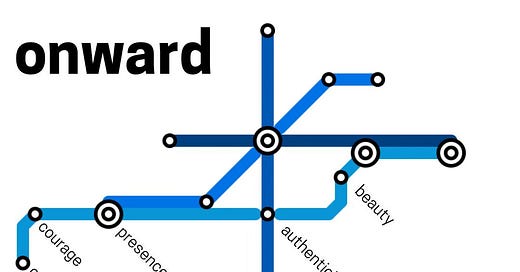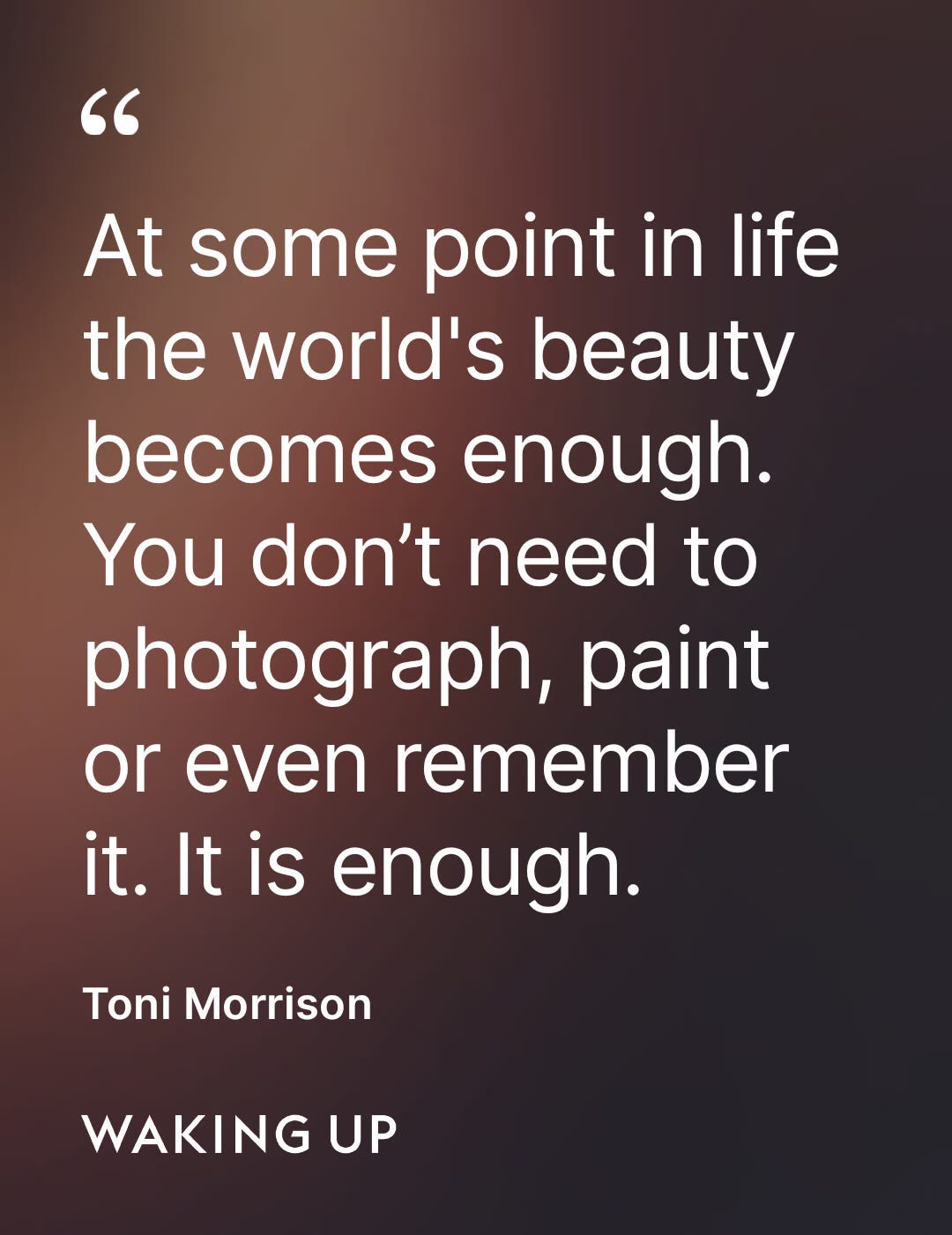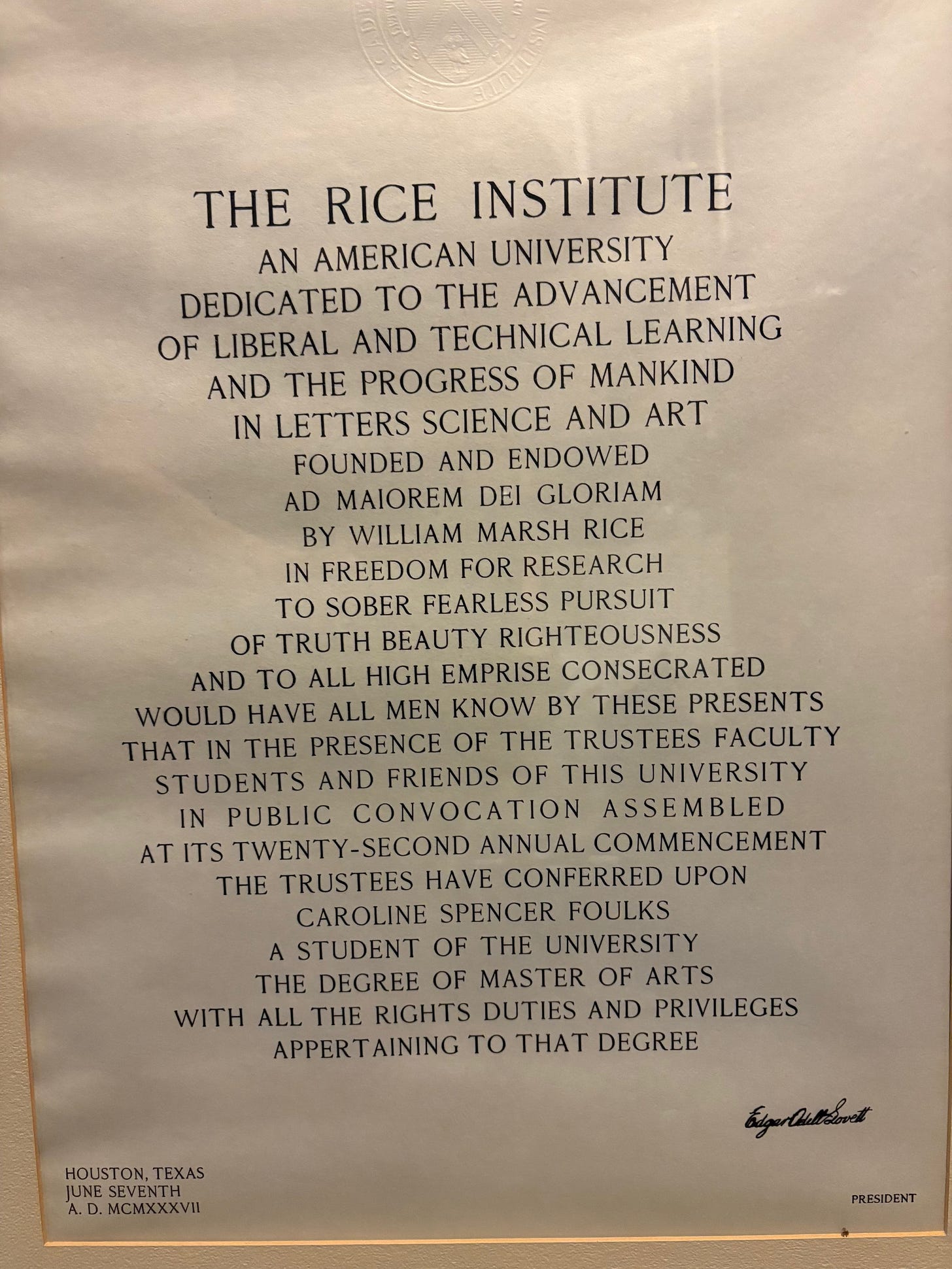The Art of Onward — Way Station Five: Beauty
seeking it and creating it. Plus: what's beautiful about a "Big Beautiful Bill"?
Hello, Blue Roomies! Thanks for being here. It’s good to share this space with you.
This feels like a consequential week, what with the National Guard rolling into Los Angeles, tanks rolling into DC, and what I heard described as a catfight between “the world’s richest man and the world’s least person.” *Cough*
It’s both strange timing and audaciously hopeful to pause and take up our fifth value for creative world-building in our Art of Onward series for supporting subscribers: beauty.
You may recall that beauty, relationship, and action are my “big three” for building hope:
My hope for this installment was to talk with a couple of artist/pastor friends about how they find beauty in difficult times, and how that pursuit helps all of us persevere. We’re still working on getting that scheduled. In the meantime I’m finding beauty coming up all over the place, as often happens when you’ve got a topic on the brain. So first, some gleanings for everyone: quotes, articles, and examples of beauty as an act of nourishment and also resistance. Then behind the paywall I’ll offer a few thoughts of my own, including the naming of the “Big Beautiful Bill.”
Remember, if you’d like to join us but are unable to pay, please get in touch. Members and friends of Trinity Presbyterian, Herndon are eligible for complimentary gift subscriptions; just ask.
First, there’s this bit from a recent Diana Butler Bass reflection about the restoration of Notre Dame Cathedral:
Consider: Do you have any buildings in your life that “have a soul”? Do you agree that beauty makes things easier? How?
Second, there’s this bit from Toni Morrison I saw posted somewhere:
Consider: What do you do when you see something beautiful? Do you try and capture it in some way? I often do, although it’s rare that I go back and peruse the photos or read the written description. Why do I do that? How does that practice feed into a consumerist mentality toward beauty?
Next is Arianne Braithwaite Lehn, writing recently about acceptance of the imperfections of our lives. Arianne quotes Mirabai Starr, who says:
It’s hard to give up our fantasies of a life where beauty is built in and we don’t have to work at finding it. It’s easy to recognize the presence of the sacred in the saintly hospice chaplain who turns your mother’s deathbed into a temple…. But what about your boring job, your addicted partner, your hometown that feels more like a strip mall than a community? What about your dining room table at dinner time?
Consider: What in your everyday, imperfect life might you see as beautiful, and what difference would that make?
And finally, trans journalist Erin Moore shared recently about LGBTQ activists in Jacksonville, Florida. Last year, Governor Ron DeSantis banned the tradition of lighting up bridges with Pride colors. Instead, activists created a DIY version with flashlights. This year, they were headed to the bridge when the drawbridge started to rise, despite there reportedly being no vessels in the water at the time. But organizers were ready and headed to a nearby bridge, lighting up the St. John’s River with color:
Consider: Where have you seen beauty in collective action recently? (I find the teamwork and creativity here at least as beautiful as the image.)
And now, some thoughts of my own.
I’ve long loved the diploma from Rice University, where Robert and I graduated in 1994. We have both of ours framed, as well as Robert’s grandmother’s from 1937. It’s several lines of text, arranged in the shape of a Grecian urn. It was Rice’s first president, Edgar Odell Lovett, who suggested the design, reflecting his classical education and the idea that beauty is connected to wisdom—a receptacle of it, if you will. Indeed, one of the lines of the diploma invokes the “sober fearless pursuit of truth, beauty, righteousness”:
Actually I wrote that wrong—there are no commas between truth, beauty, and righteousness. Is that a quirk of typesetting? Probably—there’s no punctuation anywhere else on the diploma. But I also wonder whether there’s something connective between the three virtues. Are they all facets of the same thing? Can you have beauty without truth? And is there something beautiful about righteousness?
During junior year of college, I remember studying for a humanities class while Robert and a dear friend wrestled with a math homework set. They were beating their heads against some kind of problem, perhaps a proof? I don’t remember and wouldn’t understand it even if I did. But I recall their sudden breakthrough and a jubilant cry from Jay:
But that’s so elegant!
As an English major, I knew the feeling. It’s the feeling of reading a snatch of text that’s so universal as to feel inevitable, yet so novel as to be wholly new. The flash of comprehension of a previously impenetrable sonnet. The climax of a play, ripe with dramatic irony that’s been scaffolded scene after scene. A string of internal rhymes hiding in a couplet, visible (audible!) to anyone with the patience to hunt for them.
Literature, art, music—these can be beautiful bearers of truth. But as someone who had to brute-force my way through most higher math, Jay’s exclamation was my first glimpse into the beauty found there as well.
But as the cliche goes, beauty is in the eye of the beholder, and the beholders don’t always agree. Amid the many divides we face, the divide around aesthetic preferences may be one of the deepest and most difficult to bridge. Cultural movements are undergirded with aesthetic choices that tell a story to their adherents. If you like the vibe, you’re part of the team. If you don’t, you’re not one of us. I find nothing aesthetically appealing in an Oval Office overstuffed with gilt tchotchkes, nor in Lee Greenwood. Just as others may recoil at an exuberant drag performance or a Shepard Fairey political poster.
And all of that is OK, so long as there’s some mutual forbearance, curiosity, and compassion.
Keep reading with a 7-day free trial
Subscribe to The Blue Room with MaryAnn McKibben Dana to keep reading this post and get 7 days of free access to the full post archives.








